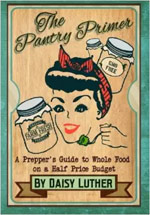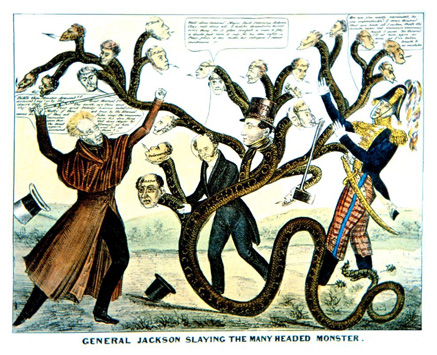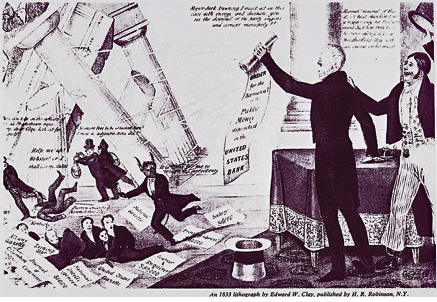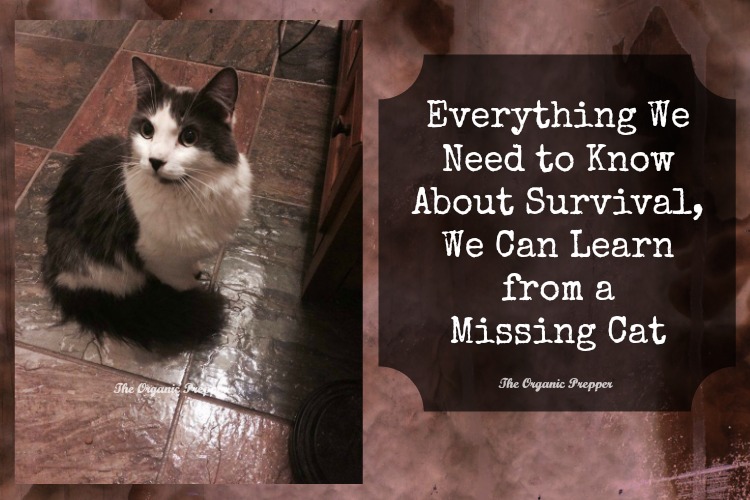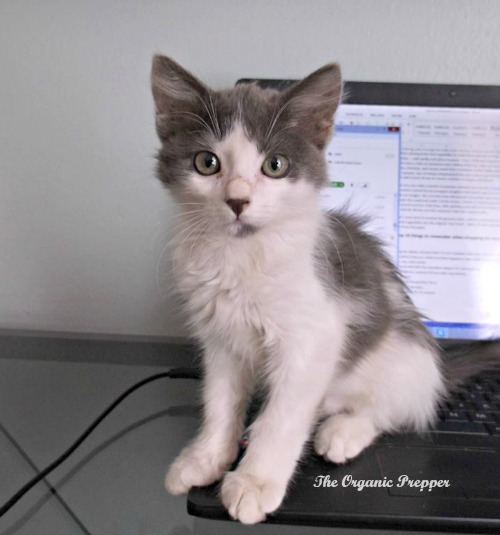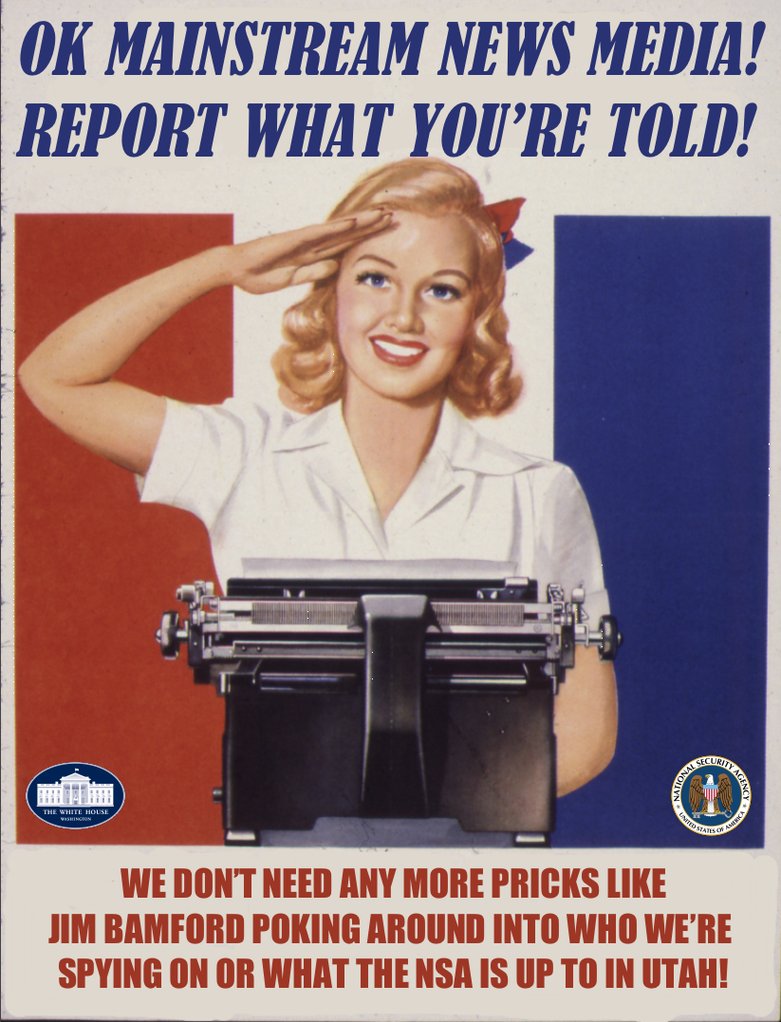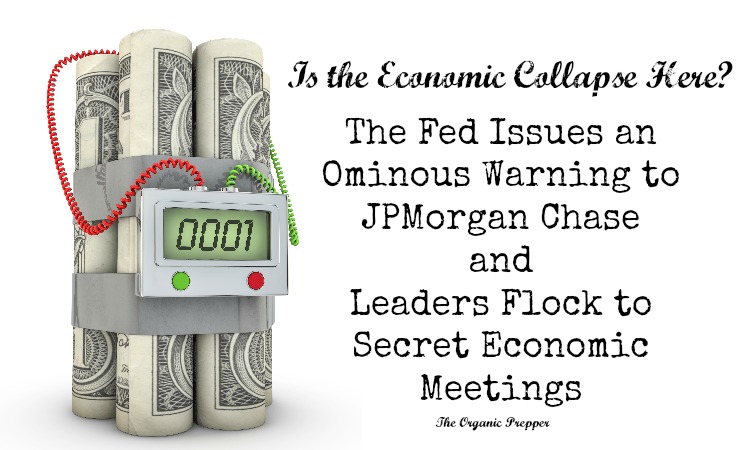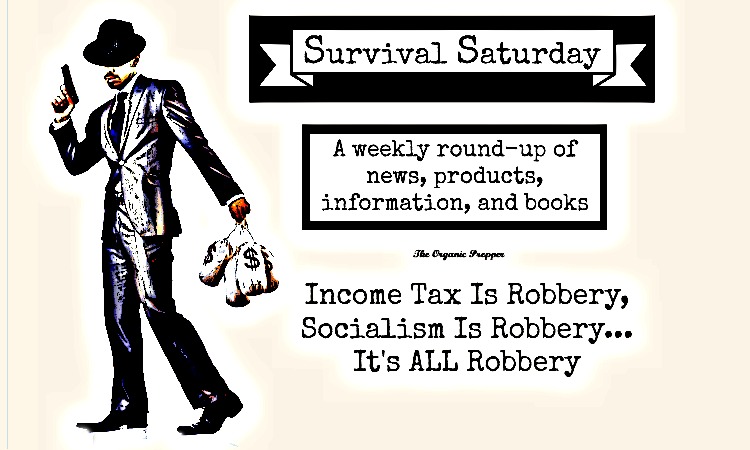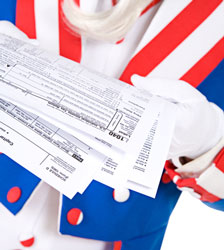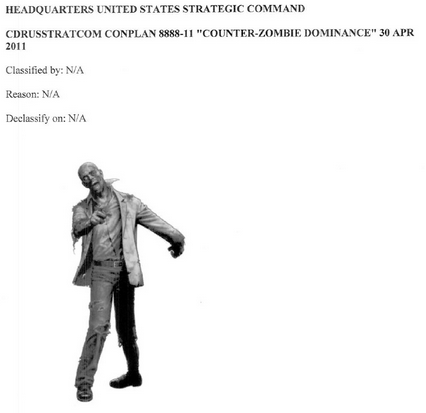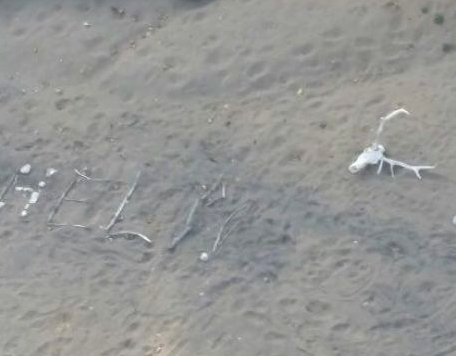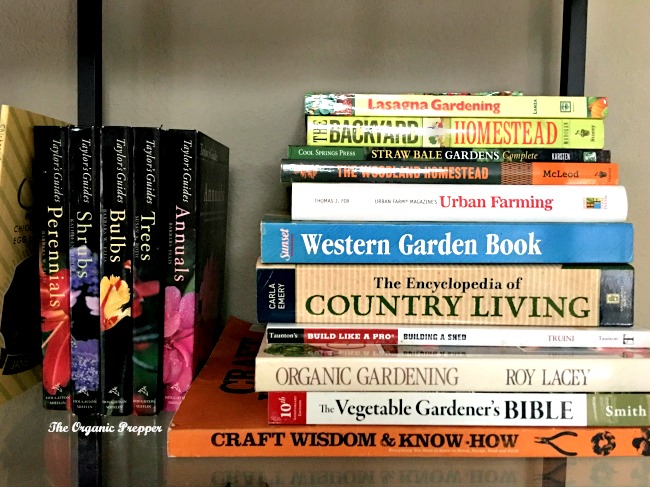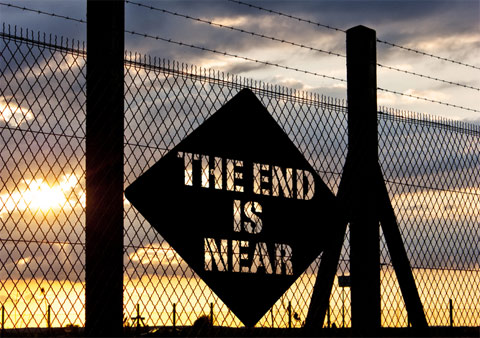
This article was written by Daisy Luther and originally published at her TheOrganicPrepper.ca site.
Editor’s Comment: Stability is paper thin, an illusion, a coyote over a cliff. The big banks on Wall Street have seized even greater power since the 2008 and collapse and are poised to consolidate the balance in the wake of the coming “third wave,” as Goldman Sachs recently warned in its own ominous statements.
For preppers, and anybody with a head on their shoulders, staying informed will mean staying ahead of the curve. The insiders at the top know the right moment to pull out their money, but the rest of us don’t. In the absence of privileged information, we can avoid the obvious traps, and hedge ourselves against some of the worst potential repercussions. But the truth is, this next wave could mean wipe out for tens of millions.
Economic Collapse? Fed Issues an Ominous Warning to JPMorgan Chase and Leaders Flock to Secret Meetings
by Daisy Luther
Tick. Tock.
Do you hear that? It’s the clock on the time bomb, and it appears to be ticking relentlessly toward our economic collapse.
It seems like every day, there is a new threat to the financial well-being of the disappearing middle class in America. Of course, less affected are the members of Congress and their buddies on Wall Street. You know, the ones that put the politicians in office to get favorable decisions made on their behalf in Washington.
But if you happen to have been ignoring the folks Obama calls “peddlers of fiction” who have been warning us all of an impending economic crisis along the lines of the last financial collapse, you might want to pay attention now, because a disturbing series of events is in motion.
First of all, the Fed just issued a terrifying warning to the biggest bank in the country.
Finally, the Fed has admitted that we just can’t take another hit without incurring an epic disaster.
And by “admitted” I mean they’ve issued a chilling warning to JP Morgan Chase, the biggest bank in America.
The letter is addressed to Teflon-coated Jamie Dimon, the leader of the bank (who seems to have made a deal with the Devil to become completely immune to prosecution, no matter what he does.)
It is 19 pages and heavily redacted, but here are some excerpts that should send a chill down your spine. The emphasis is mine.
The Agencies also identified a deficiency in the 2015 Plan regarding the criteria for a rational and less-complex legal entity structure. In order to substantially mitigate the risk that JPMC ‘s material financial distress and failure would have systemic effects, JPMC should ensure that its legal entity structure promotes resolvability under the preferred resolution strategy across a range of failure scenarios. Flexibility—or “optionality”—within the resolution strategy helps mitigate risks that, if not overcome, could otherwise undermine successful execution of the strategy and, more broadly, pose serious adverse effects to the financial stability of the United States.
Then there’s this:
These divestiture options do not appear to provide sufficient optionality under different market conditions.
The divestiture options in the 2015 Plan also were not sufficiently actionable, as the 2015 Plan sections fore did not contain detailed, tailored, and complete separability analyses. For example, only one obstacle to divestiture to the [redacted] key vendor contracts was adequately analyzed; the analysis of the other key obstacles cited regulatory approvals, client communications [redacted]
This is also concerning:
JPMC does not have an appropriate model and process for estimating and maintaining sufficient liquidity at, or readily available to, material entities in resolution (RLAP model). This is notable given J?MC’s liquidity profile in its 2015 Plan, which relies on the firm’s ability to shift substantial amounts of liquidity around the organization during stress, as needed. As explained below, JPMC’s liquidity profile is vulnerable to adverse actions by third parties.
Even without a degree in finance, I know this is bad:
JPMC’s 2015 Plan relied on roughly of parent liquidity support being injected into various material entities, including its U.S. broker-dealers, during the period immediately preceding JPMC’s bankruptcy filing. This includes reliance on funds in foreign entities that may be subject to defensive ringfencing during a time of financial stress.
Here’s the long and the short of it:
Every year, large banks must create a contingency plan that explains what they’ll do if they begin to go under. The biggest bank in the country has such a lackluster, half-baked plan that the Fed called them out on it for 19 pages and warns that their nonchalance could be responsible for the financial instability of the entire country.
PS: Since this isn’t my first rodeo, I downloaded the entire PDF. It’s funny how things have a way of disappearing off the internet when the mainstream media wants to ignore them. You can download it yourself too at this link:
Living-Will-Letter-Issued-to-JPMorgan-Chase
JPMorgan Chase is not alone.
But they’re not the only ones.
Bank of America and Wells Fargo also saw their contingency plans rejected. Zero Hedge reports:
Three of the five largest U.S. banks (JPMorgan Chase, Bank of America and Wells Fargo) have now had their wind-down plans rejected by the Federal agency insuring bank deposits (FDIC) and the Federal agency (Federal Reserve) that secretly sluiced $13 trillion in rollover loans to the insolvent or teetering banks in the last epic crisis that continues to cripple the country’s economic growth prospects.
Are all three banks going down?
But that isn’t even the scariest part.
In case you think it’s just a normal day at the Fed…It isn’t just these warning letters that should make you pay attention. At the risk of sounding like I’m selling Ginsu knives, there’s more.
The Great Recession Blog posted a bullet list that should blow your mind when taken in conjunction with the news above. (Be sure to read the full article – it goes into a lot more detail.) It seems that there’s enough concern to spark a flurry of secret meetings among those in power.
- The Federal Reserve Board of Governors just held an “expedited special meeting” on Monday in closed-door session.
- The White House made an immediate announcement that the president was going to meet with Fed Chair Janet Yellen right after Monday’s special meeting and that Vice President Biden would be joining them.
- The Federal Reserve very shortly posted an announcement of another expedited closed-door meeting for Tuesday for the specific purpose of “bank supervision.”
- A G-20 meeting of finance ministers and central-bank heads starts in Washington, DC, on Tuesday, too, and continues through Wednesday.
- Then on Thursday the World Bank and the International Monetary Fund meet in Washington.
- The Federal Reserve Bank of Atlanta just revised US GDP growth for the first quarter to the precipice of recession at 0.1%.
- US banks are widely expected this week to report their worst quarter financially since the start of the Great Recession.
- The European Union’s new “bail-in” procedures for failing banks were employed for the first time with Austrian bank Heta Asset Resolution AG.
- Italy’s minister of finance called an emergency meeting of Italian bankers to engage “last resort” measures for dealing with 360-billion euros of bad loans in banks that have only 50 billion in capital.
How does this affect you?
Maybe you think this won’t affect you. Maybe you don’t have an account with anyone affiliated with JP Morgan Chase, BofA, and Wells Fargo. Maybe you aren’t an investor. Maybe you don’t have real estate. Maybe you are absolutely certain, without a shadow of a doubt, that your job is secure. Perhaps you have money in the bank, or maybe not – maybe you keep it stuffed in your mattress.
The trouble is, the money you are working overtime to make, the security you feel that you have by saving it…it’s perceived value can be completely wiped out by a financial crisis that occurs on a national level. That’s because if a huge bank like JPMC fails, lots of other companies fail with it. Then this stuff happens:
- Prices will go up. We’ve seen an almost unprecedented increase in the price of food over the past couple of years, even as the quality of the food available plummets. This is due to massive droughts, early freezes, and basic cost-of-living increases.
- Unemployment will go up. Those without jobs now are equal to the number of unemployed during The Great Depression. As the economy plummets, that number will almost certainly exceed the previous highs as businesses scramble to keep their heads above water. They’ll cut stuff to try and keep afloat, and if that fails, the jobs will be lost anyway.
- Rents will increase. If you don’t own your home, prepare to pay higher rent as landlords try to cover their losses of income in other sectors. Foreclosures will be on the rise, which means there will be fewer homes available.
- Bail-ins could dip into your savings. Remember a few years ago when depositors in Cyprus could do nothing when the banks there helped themselves to their savings in order to “save” themselves? Do you really, truly, think it can’t happen here?
The bottom line is, income will remain the same, decrease, or even disappear entirely for many of us. Meanwhile, the price of darn near everything will go up. Expect to pay more for things like keeping your utilities on, feeding and clothing your family, keeping a roof over your heads. Aside from that, those dollars you are carefully saving? They are only providing you with the illusion of security.
Aside from that, those dollars you are carefully saving? They are only providing you with the illusion of security.
Here’s what you need to do
Here’s what you need to do immediately in the event of either a market crash or further news of a bank failure. (Of course, if you wait until a bank failure has been announced, you may have waited too long.)
- Take your money out of the bank ASAP. If you still keep your money in the bank, go there and remove as much as you can while leaving in enough to pay your bills. Although it wasn’t a market collapse in Greece recently, the banks did close and limit ATM withdrawals. People went for quite some time without being able to access their money, but were able to have a sense of normalcy by transferring money online to pay bills or using their debit cards to make purchases. Get your cash out. You don’t want to be at the mercy of the banks.
- Stock up on supplies. Make sure you are prepped. If you’re behind on your preparedness efforts and need to do this quickly, you can order buckets of emergency food just to have some on hand. (Learn how to build an emergency food supply using freeze dried food HERE) Hit the grocery store or wholesale club and stock up there, too, on your way home. As mentioned above, if you can’t get your money out, you may be able to make online or debit card purchases.
- Load up on fuel. Fill up your gas tank and fill your extra cans also. Quite often, fuel prices skyrocket in the wake of a market crash.
- Be prepared for the potential of civil unrest. If the banks put a limit on withdrawals (or close like they did in Greece) you can look for some panic to occur. If the stores dramatically increase prices or close..more panic. Be armed and be prepared to stay safely at home. (Although this article was written during the Ferguson race riots, civil unrest follows a similar pattern regardless of the cause.)
- Be prepared for the possibility of being unable to pay your bills. If things really go downhill, the middle class and those who are the working poor will be the most strongly affected, as they have been in Greece during that country’s ongoing financial crisis. This article talks about surviving if you are unable to pay all of your bills.
For the long term, focus on information
Hopefully there’s no need to empty out your bank accounts, stock up on last minute supplies, or lock-and-load for home protection. However, if this is an actual 1929/2008-style stock market crash, you need to take your preps to the next level. If you can’t buy your necessities, you’re going to have to produce them, something that is a complete turnaround for most folks.
Information is the key. It’s imperative that you learn everything you can so that you know what you need to add to your preps. As well, it’s essential to acquire the knowledge you need to fend for yourself. Take these two steps, if you haven’t already.
#1. Bookmark these preparedness websites. (Free)
The internet is a wonderful place, and best of all, this knowledge can be found for FREE! The more you know about crisis situations, the more ready you will be to face them. Some sites are friendlier to beginners than others, so if you stumble upon a forum where people seem less than enthusiastic about helping people who are just starting out, don’t let it get you down. Move on and find a site that makes you feel comfortable. Following are some of my favorites, and the link will take you to a good starting point on these sites. In no particular order:
Following are some of my favorites, and the link will take you to a good starting point on these sites. (Actually, it’s wise to begin increasing your knowledge even if we get a reprieve.) In no particular order:
- The Organic Prepper (obviously!)
- Backdoor Survival
- Ready Nutrition
- Graywolf Survival
- SHTFplan
- Underground Medic
- Survival Blog
- The Survival Mom
- Herbal Prepper
- Prepper Website
#2. Build your library. (Small expense)
This is where some money could come into play. Most of the time, people in the preparedness world like to have hard copies of important information. This way, if the power goes out and you can’t access the internet or recharge your Kindle, you still have access to vital advice.
Some of these books are for just such an event, while others are guides to building your self-reliance skills. Commit to picking up a good book each pay period until you have a library to reference during any type of scenario.
- The Prepper’s Blueprint: The Step-By-Step Guide To Help You Through Any Disaster
(This is the be-all and end-all Bible of prepping. I wish I could put my own book first, but Tess’s book is the most complete compendium out there, broken into easy, manageable steps.)
- The Pantry Primer: A Prepper’s Guide to Whole Food on a Half-Price Budget
(This is my newest book, which outlines building your pantry while on a strict budget)
- The Complete Tightwad Gazette
(While this book is about hardcore frugality, trust me, there’s crossover. There are a lot of great suggestions for creating stockpiles on a budget, living simply, and doing things the old-fashioned way. And saving money is always a good idea, so that you can use it to help you become more prepared.)
- SAS Survival Guide: How to Survive in the Wild, on Land or Sea (I keep this little gem in my vehicle, my bug out bag, and in my kids’ backpacks. It doesn’t go into lots of detail, but if you find yourself stranded in the middle of nowhere, this small book could save your life.)
- The Encyclopedia of Country Living, 40th Anniversary Edition: The Original Manual of Living Off the Land & Doing It Yourself
(A compendium of all things self-reliance)
- Prepper’s Home Defense: Security Strategies to Protect Your Family by Any Means Necessary
(If you can’t protect it, you don’t own it. It’s that simple.)
- How to Survive the End of the World as We Know It: Tactics, Techniques, and Technologies for Uncertain Times
(By James Wesley Rawles, who many consider to be the “Father” of the modern preparedness movement)
- The Prepper’s Pocket Guide: 101 Easy Things You Can Do to Ready Your Home for a Disaster
(Quick, inexpensive preparedness steps that anyone can take)
- The Survival Medicine Handbook: A Guide for When Help is Not on the Way
(It’s vital to have a guide on hand that doesn’t rely on 911 for serious injuries, in the event that you’re completely on your own)
- The Organic Canner
(It’s awesome to grow your food, but how will you make it last through the winter, particularly during an off-grid scenario?)
- Prepper’s Natural Medicine: Written by my friend and colleague, Cat Ellis, this book has everything you need to know about creating your own medicine and caring for your family’s health in the event of a crisis.
- Get Prepared Now: Written by the autor of The Economic Collapse Blog himself, this book will provide you with budget-friendly, practical, collapse-specific advice.
- Prepper’s Financial Guide: By prolific author Jim Cobb, this book will help you figure out how to function in a post-collapse marketplace.
Be sure to check out used bookstores, libraries, and garage sales, too. Look for books that teach self-reliant skills like sewing, gardening, animal husbandry, carpentry, repair manuals, scratch cooking, and plant identification. You can often pick these up for pennies, and older books don’t rely on expensive new technology or tools for doing these tasks.
Have they finally kicked the can to the end of the road?
Things aren’t looking good. It makes me wonder if all of the quantitative easing and can-kicking has finally reached the point that they can’t push economic disaster back any further.
Please feel free to share any information from this article in part or in full, giving credit to the author and including a link to The Organic Prepper and the following bio.
Daisy Luther is the author of The Pantry Primer: A Prepper’s Guide To Whole Food on a Half Price Budget. Her website, The Organic Prepper, offers information on healthy prepping, including premium nutritional choices, general wellness and non-tech solutions. You can follow Daisy on Facebook and Twitter, and you can email her at daisy@theorganicprepper.ca
Also From Daisy Luther:
The Prepper’s Blueprint: A Step-By-Step Guide To Prepare For Any Disaster
Here’s How You’ll Die When the SHTF (and How to Prevent Your Untimely Demise)
How to Prepare for a Cyber Attack: ‘These Systems Could Be Completely Inoperable or Breached’
San Andreas for Preppers: 12 Essential Survival Lessons from the Movie
12 Bad Strategies That Will Get Preppers Killed
Lock and Load: Are You Prepared for Civil Unrest?
You’ve Been Warned: Why You Need to Be Ready for Total Grid Failure
